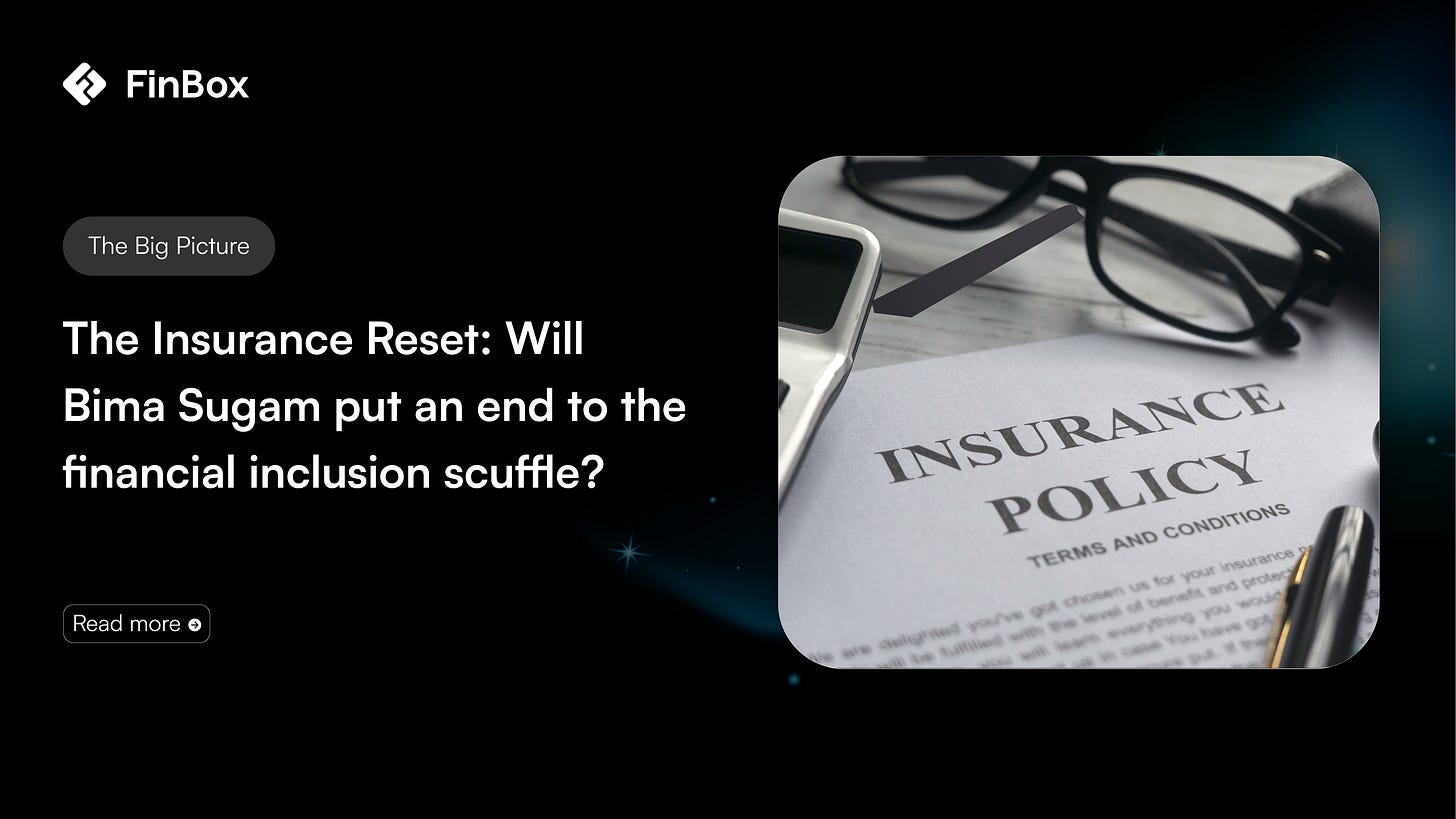The Insurance Reset: Will Bima Sugam put an end to the financial inclusion scuffle?
While everyone was debating whether fintech had abandoned inclusion for the masses, chasing premium customers, IRDAI quietly built the infrastructure to solve the problem differently.
Bima Sugam launched this year with little fanfare outside insurance circles. Most coverage focused on the obvious benefits: one portal for all policies, lower costs, better transparency. Fair enough. But that misses the bigger story.
The big picture here is about making financial identity portable.
Every Bima Sugam policy gets tied to something called an e-Insurance Account. Unlike credit scores that penalise you for having no history, or bank statements that only show snapshots, this account builds value from participation, not exclusion.
It matters because insurance reaches people; credit doesn’t.
A domestic worker in Bengaluru might never qualify for a personal loan, but they will buy health coverage for their family. A small shop owner in Kanpur might not have GST filings, but they will insure their vehicle. These aren't edge cases. They're the majority of working Indians who remain invisible to formal credit.
Now, imagine those insurance decisions become data points. When someone pays premiums consistently for two years, that's a signal. When they file a legitimate claim and get paid out, that's verification. And when they voluntarily upgrade coverage, that’s financial behaviour worth understanding.
The scale of this opportunity becomes clearer when you consider what IRDAI is creating. Bima Sugam will connect directly to India Stack, auto-populating customer data through Aadhaar, processing payments via UPI, and generating policies instantly through automated underwriting. The chairman call it a "game-changer" that will require three times the current number of distributors to serve 1.4 billion people.
But the real innovation lies in the Bima Trinity. Alongside the marketplace, IRDAI is launching Bima Vistaar, composite insurance plans covering health, life, accident, and property in one product. These will be sold by Bima Vahaks, a women-centric agent workforce designed to reach underserved markets. The entire ecosystem is built for scale and inclusion from day zero.
The timing is no accident. IRDAI has moved from rule-based to principle-based regulation, making India more attractive to international investors. Chairman Debasish Panda recently suggested opening insurance to 100% foreign investment, up from the current 74% limit. The logic is sound. Achieving "Insurance for All by 2047" requires massive capital, and domestic investment alone won't be enough.
What's particularly smart about this approach is how it sidesteps the traditional problems of financial inclusion. Banks worry about lending to people without formal income proof. Insurance companies, by contrast, are designed to handle risks. They can underwrite a vendor in a local market based on different signals, community ties, business location, and payment history through digital channels.
The Account Aggregator framework makes this data portable and consent driven. Users can choose to share their insurance history when applying for credit elsewhere. Primary evidence of financial responsibility, verified through regulated channels.
This can clearly flip the inclusion problem on its head.
Instead of trying to lend to people with no financial footprint, we can now build footprints through products they actually want. Insurance becomes the foundation. Everything else will be built on top.
The tech impact is significant, too. Verifying someone's income used to mean parsing PDFs and hoping they weren't doctored. Now it means accessing real payment flows through regulated pipes. The difference is shown in both accuracy and speed.
What makes this particularly compelling is how quickly the infrastructure moves. Prasun Sikdar just took charge as Bima Sugam's first CEO in November. The platform will allow agents to complete transactions online, selling policies through a network that reaches previously untouched markets. IRDAI estimates it needs three times its current distributor base to serve the full population, and it is developing the tools to make this economically viable.
While the agents may perceive this move to be threatening their earning potential, I’m focusing more on unit economics here. A traditional insurance agent might spend hours on paperwork for a single policy. With Bima Sugam's automated systems, that same agent can process multiple policies at the same time. Higher productivity means agents can afford to serve smaller ticket sizes profitably. Lower operational costs mean insurers can price products more aggressively for mass markets.
For fintech builders, this makes way for a new product creation playbook. Start with protection, then extend trust to other products. The traditional approach assumed credit was the natural entry point. But most Indians will buy insurance before they ever qualify for formal credit.
The downstream effects could be substantial. When millions of new users enter the formal financial system through insurance, they create demand for adjacent services. Savings products tied to insurance payouts. Credit products backed by verified premium payment history. Investment products that create established financial relationships.
The vision hinges on robust connectivity. The infrastructure should be built to let verified insurance data flow seamlessly to other parts of the financial system, and insurers who understand how to parse, verify, and enrich the data they hold will have a significant advantage.
But the opportunity extends beyond pure-play insurance companies. Banks looking to expand their customer base, NBFCs seeking alternative data sources, and fintechs building embedded finance products all benefit from a system where financial identity is portable and verifiable.
The competitive advantage for the industry will now be less dependent on customer acquisition and more on customer intelligence. So, it’s time for us to turn consented data into better products, faster approvals and more accurate pricing.
While the industry argued about serving the premium vs. the mass market, the regulator built a bridge between them.
That's all from me this week.
Until next time.
Cheers,
Rajat



